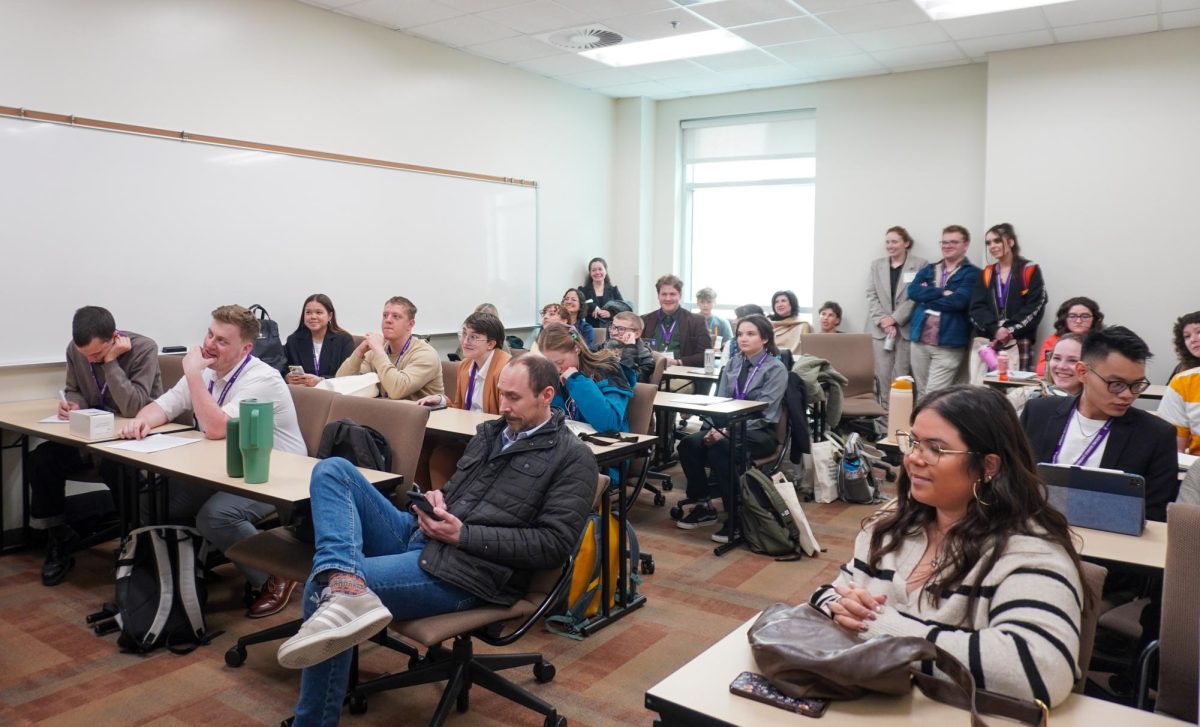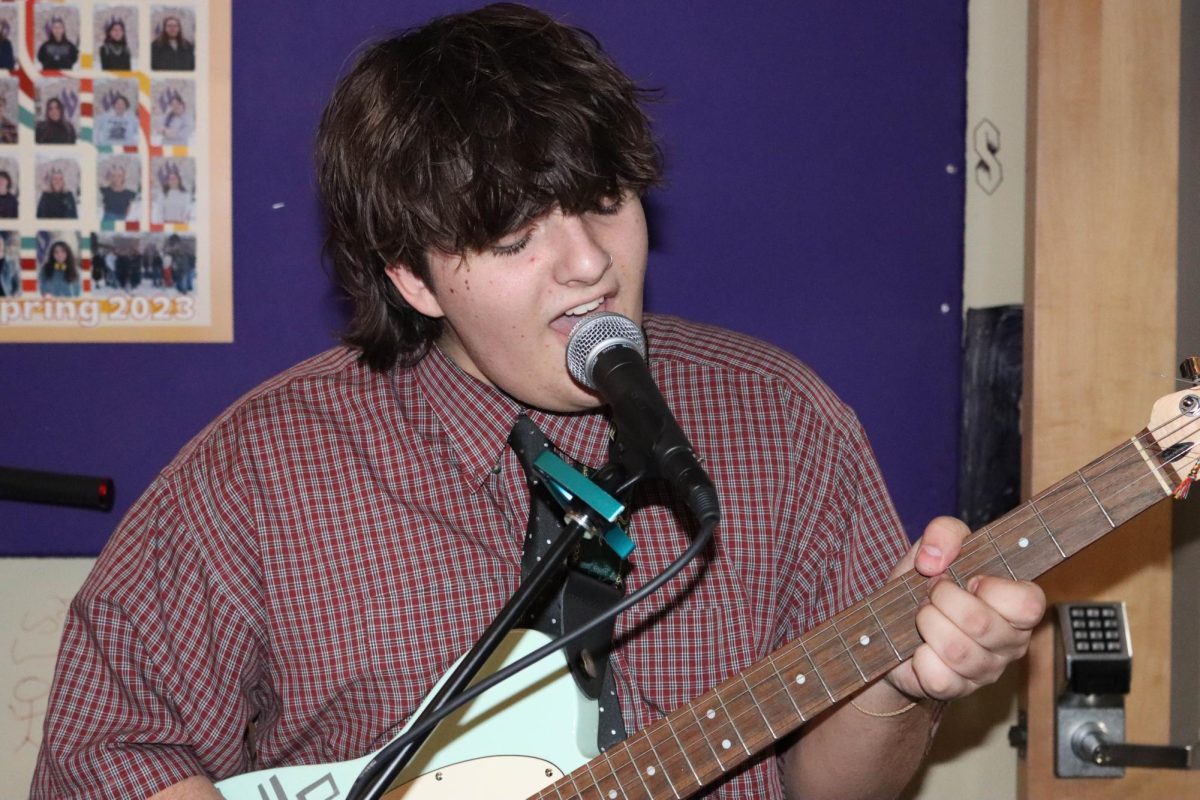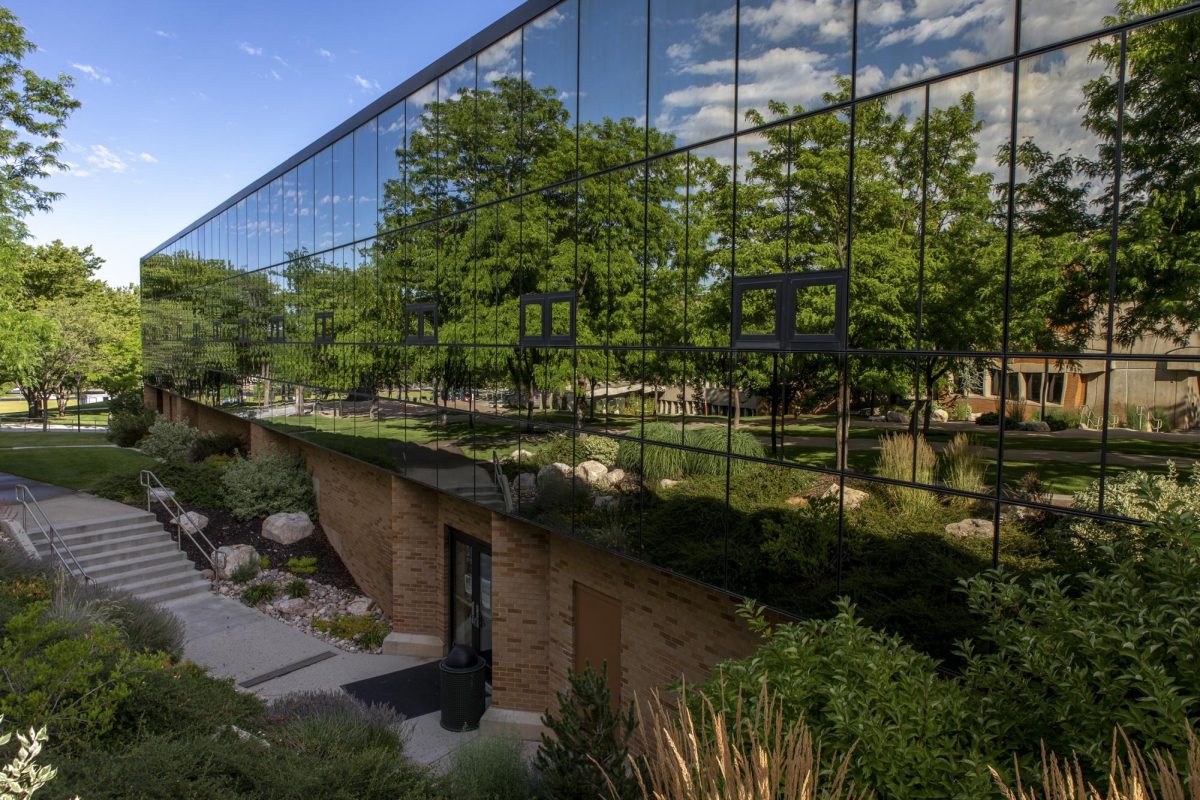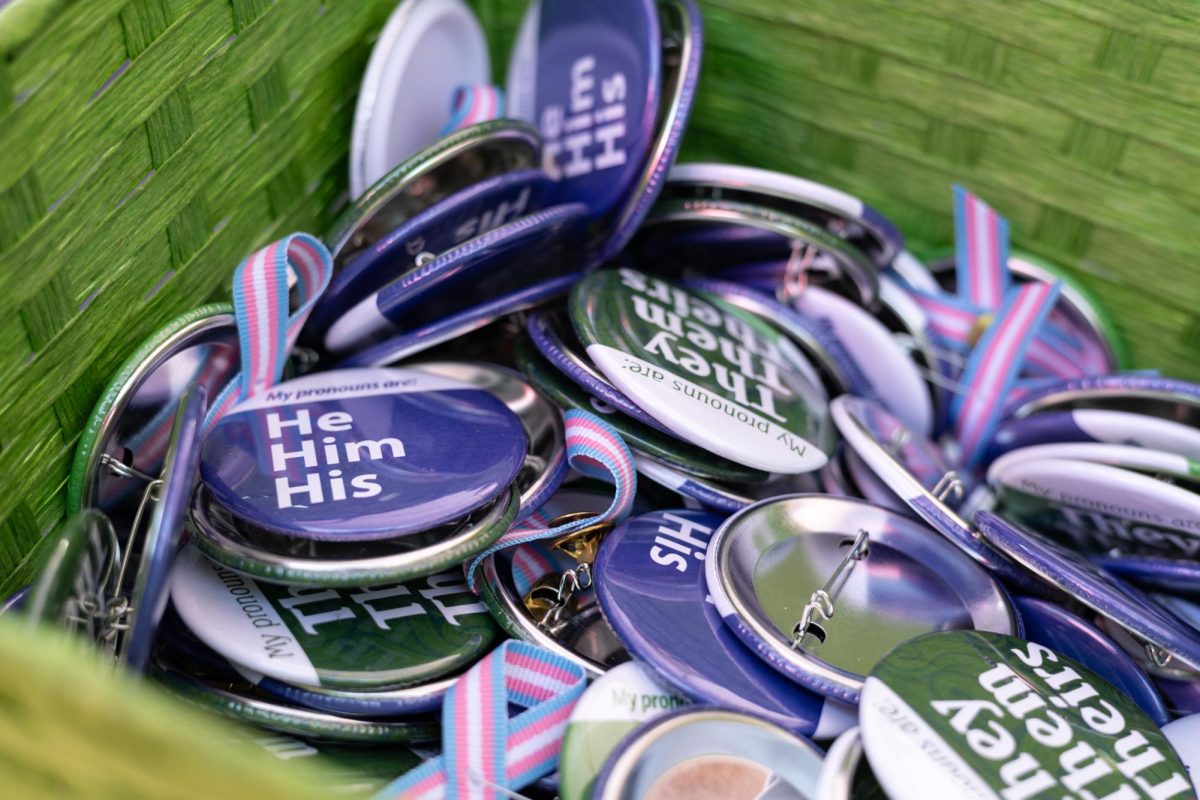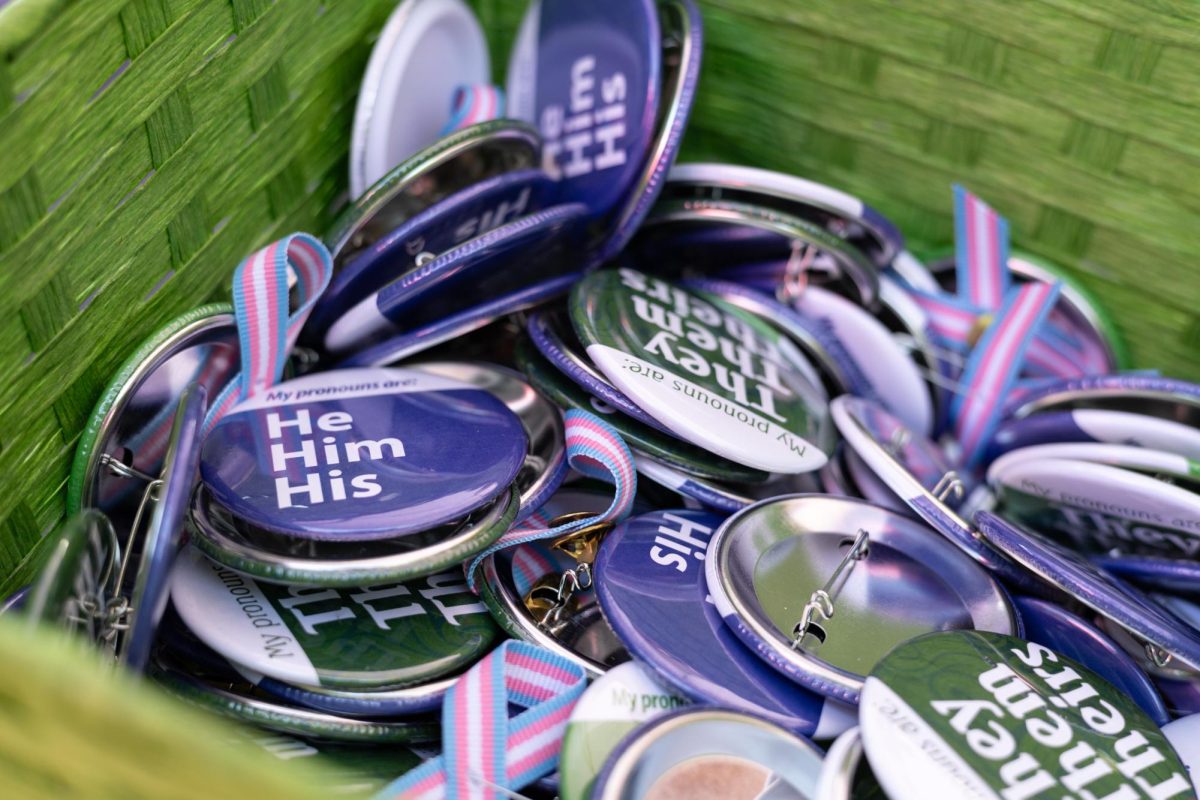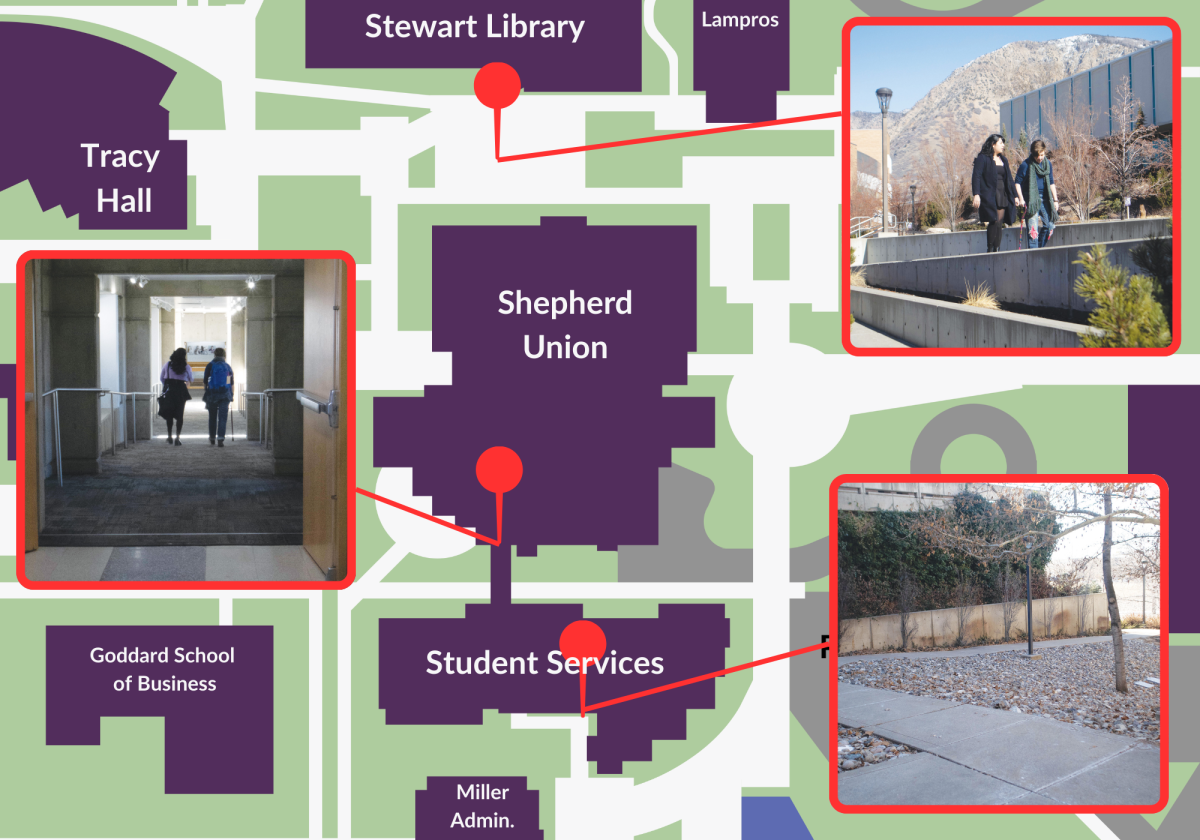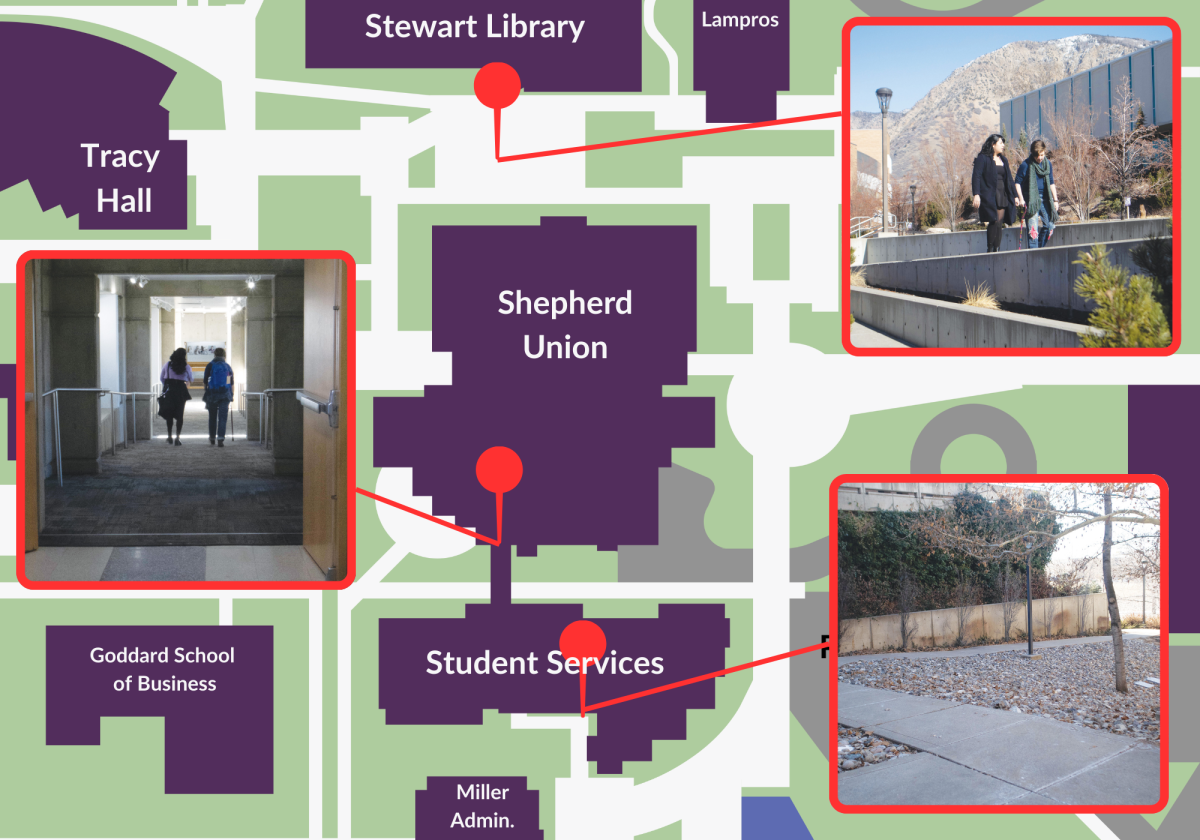After years of conception and planning, The Ray L. Kimber Music and Sound Recording Studio in the Browning Center is finally finished and open.
A VIP open house was held Oct. 1 for the architects, faculty, donors, students and others involved to see the final product of the new, state-of-the-art studio.
The studio setup has three rooms. Mark Maxson, director of the Sound Production and Recording program, explained that the first is the machine room. It’s the smallest room, containing only the IT equipment and fans necessary to run the equipment in the studio. It’s closed off with a sound-proof door so as not to disturb the recording process.

Shane Sanders, principal architect, enjoy the completed recording studio. (Lisa Rajigah/The Signpost)
The second is the mixdown room, containing the large Neve studio console, large screens and speakers. Maxson said they will also bring in a couch and some desks, and that this room is where the main teaching will happen for students learning how to produce audio.
The third, the tracking room, is separated from the mixdown room by two heavy sliding doors that, once closed, sound-proof the room. This is the room where artists will play for recording.
During the tour, Browning Center director Jim Craig had guests stand in both rooms and close the doors to try a scream test. Everyone on one side yelled, and waved their arms to visually indicate that they were yelling, and then those on the other side yelled. Both sides could only hear a very faint noise, even with many people simultaneously screaming.

The double doors are not the only features of the room that create its soundproof quality. Shane Sanders, principle architect of Sanders and Associates Architects, explained that there is a lot behind the walls that occupants don’t see that make the room what it is. The whole room is a structure in itself, completely isolated from the building and sitting on rubber isolators.
“It’s very unique, and a lot of the unique things you don’t see,” Sanders said.
Also in the tracking room is what Maxson called the mic cabinet, containing the program’s microphone collection. Maxson explained that there are different microphones for different purposes — for recording vocalists, various instruments and drum sets and recording podcasts — and each has its own characteristics and tone. They even have vintage microphones from the 1950s that produce a sound unlike any modern microphone. He said microphones are the key to recording.
“Where we really shine is our microphone collection,” Maxson said. “We have so many different types and diverse microphones that we can record almost any situation.”
Guests touring the studio could be heard making comments about how impressive it was and all the great work Weber State University will be able to produce in the future.
Peter Grueneisen, principle architect of nonzero\architecture in California, and Sanders said the final result of the studio is beautiful and they’re very happy with it. Grueneisen was the main designer of the studio and works with these often in his career.
“It’s always exciting to see places like this go in schools where people start learning about these things and get into the industry, so it’s really exciting and satisfying to see it,” Grueneisen said.

While the recording studio will be used by many students throughout the College of Arts and Humanities, Maxson said it’s specifically aimed towards training those in the new Sound Production and Recording minor and associate degree. It’s these students who will learn how to professionally record and edit audio, how to use sound equipment and software and how to work with others in a studio setting.
“I think it really prepares them for the real world,” Grueneisen said. “Their ambition is to work in those studios at some point, and having something that is very similar and comparable to what you would find in a commercial studio is really a great preparation and I think it makes a big difference for the students. And it will also help attract more students, I think.”
Ray Kimber, the main donor in whose name the recording studio was dedicated, has been involved with the Browning Center and audio production since 1968. He has designed microphone setups that the university uses in the Austad Auditorium, and the power outlets he designed specifically for audio were installed in the recording studio.
Kimber said it was “great, great, great” to see the finished studio. He talked about how there are three legs to the stool of music — composition, performing and recording — and how this new recording studio helps WSU complete that third leg to achieve better greatness in music production.





